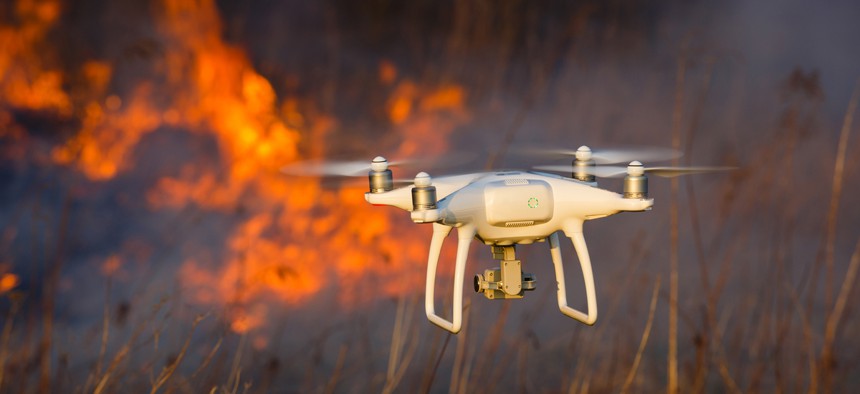Interior Doubled Its Use of Drones in 2018

Konstantin Tronin/Shutterestock.com
The agency flew more than 10,000 unmanned missions to survey federal land, monitor wildlife and respond to natural disasters.
The Interior Department drastically expanded its use of drones in 2018 and saved millions of dollars in the process.
Last year, Interior logged some 10,342 unmanned aircraft flights, more than doubling the scale of its operations from 2017, according to a report published Monday. Natural disaster response missions—which made up about a third of the total flights—grew nearly 700 percent, officials said.
Unmanned systems are cheaper to operate than their manned counterparts and faster at collecting data than humans on foot, making them useful tools for managing the 500 million acres under Interior’s purview. According to the report, the department today relies on some 530 drones to survey federal lands, inspect infrastructure, track wildlife and assist disaster response efforts. By 2020, it plans to expand its fleet to nearly 800 aircraft.
While 2018 marked the first time Interior recruited outside contractors to support its drone operations, the department is investing heavily in ramping up its own in-house capabilities, the report said. The agency trained and certified 205 new drone pilots and grew its fleet roughly 70 percent last year.
In-house drone operations are roughly 40 percent cheaper than contracted services, officials said, and the drones themselves are vastly cheaper to purchase and operate than traditional manned aircraft. So far, Interior has spent roughly $1.9 million on its entire drone fleet, while it pays $2 million for its cheapest helicopter.
Last year, drones saved the department an estimated $14.8 million, the report said.
But while officials expected expenses to drop as drone usage rises, their investments in the tech has also yielded some unanticipated benefits, particularly in emergency response, according to Mark Bathrick, the director of Interior’s Office of Aviation Services.
Today, first responders largely rely on drones to collect aerial data on natural disasters like wildfires and volcanic eruptions, but Bathrick told Nextgov there are growing opportunities for the aircraft to directly assist in the fight. Responders are currently using drones to start controlled burns to block the spread of wildfires at all hours of the day, as well as guide disaster victims away from harm, he said.
Over the next year, he said, the department plans to continue outfitting drones with new sensors and capabilities, like testing their capacity to deliver emergency equipment in disaster zones and other hard-to-reach locations.
“Everyday we’re seeing new and cool things these [drones] can do,” he said.
NEXT STORY: A DNA Company Wants You to Help Catch Criminals






